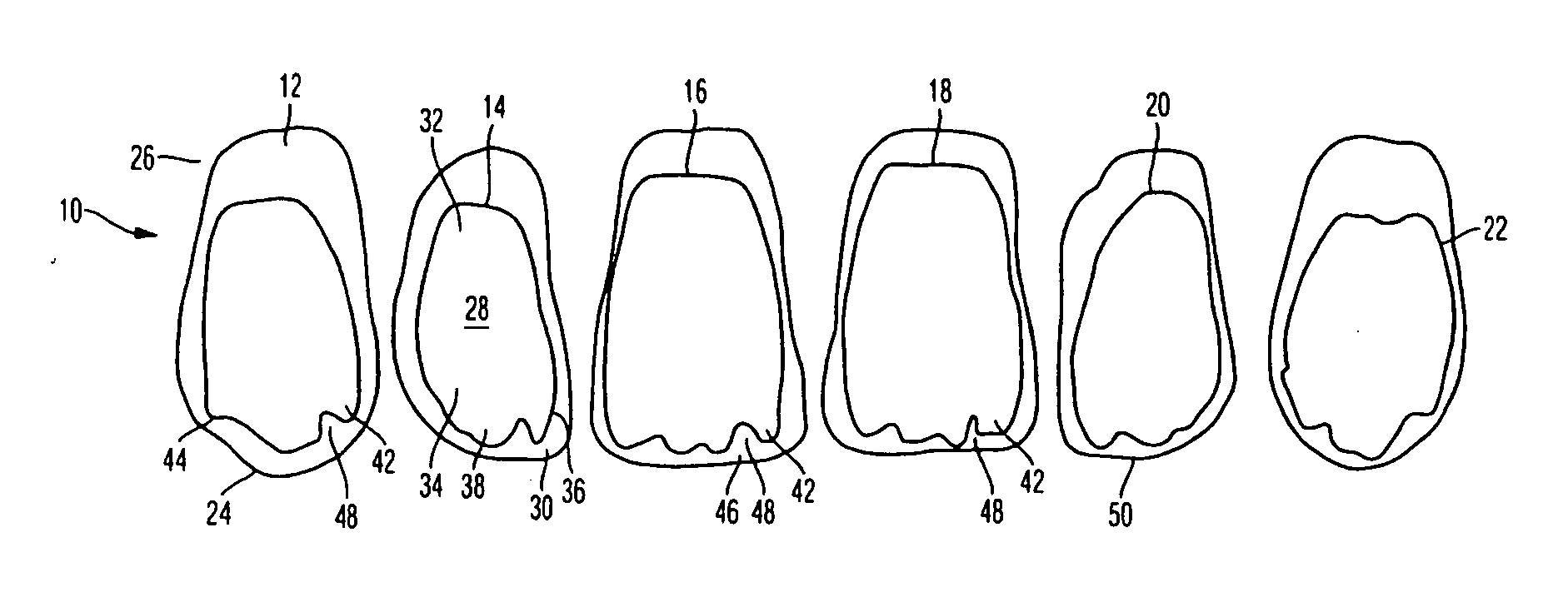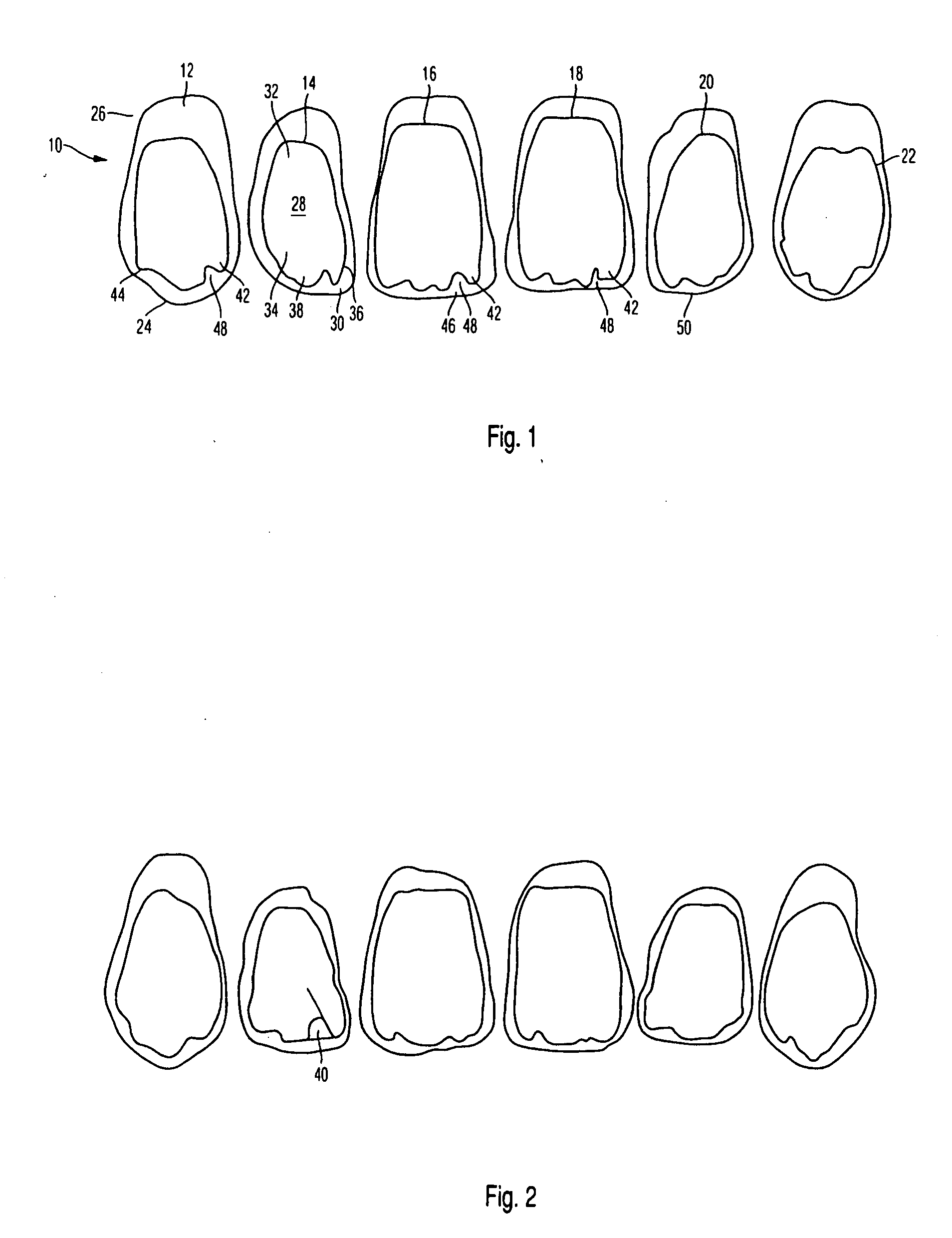Incisor tooth or canine tooth, and set of teeth, and method for producing and incisor tooth or canine tooth
a technology for canine teeth and incisor teeth, applied in the field of anterior teeth, can solve the problems of uneven tooth effect, unsatisfactory esthetic point of view, and poor sprue, and achieve the effects of good anchoring, easy production, and good tolerance of inner stresses
- Summary
- Abstract
- Description
- Claims
- Application Information
AI Technical Summary
Benefits of technology
Problems solved by technology
Method used
Image
Examples
Embodiment Construction
[0028]FIG. 1 shows, by way of example, one embodiment of a set of teeth according to the invention for the upper jaw, with four incisor teeth and two canine teeth. The set 10 of teeth comprises a canine tooth 12, four incisor teeth 14, 16, 18 and 20, and a further canine tooth 22. The view shows in each case a section through the tooth in the area of its greatest extent. Each tooth has an incisal cutting edge 24 and extends between this cutting edge and the basal end 26 in a manner known per se from the basic form.
[0029]For simplicity, the incisor tooth 14, which is to be regarded as tooth II, will be considered here. The tooth 14 is basically built up of dentine material 28 which, in the illustrative embodiment shown, is completely surrounded by cutting-edge material 30. Although the cutting-edge material in the illustrative embodiments shown here extends also over the basal end 26, it will be appreciated that it is also possible to provide the dentine material there.
[0030]In the i...
PUM
| Property | Measurement | Unit |
|---|---|---|
| thickness | aaaaa | aaaaa |
| thickness | aaaaa | aaaaa |
| total length | aaaaa | aaaaa |
Abstract
Description
Claims
Application Information
 Login to View More
Login to View More - R&D
- Intellectual Property
- Life Sciences
- Materials
- Tech Scout
- Unparalleled Data Quality
- Higher Quality Content
- 60% Fewer Hallucinations
Browse by: Latest US Patents, China's latest patents, Technical Efficacy Thesaurus, Application Domain, Technology Topic, Popular Technical Reports.
© 2025 PatSnap. All rights reserved.Legal|Privacy policy|Modern Slavery Act Transparency Statement|Sitemap|About US| Contact US: help@patsnap.com



